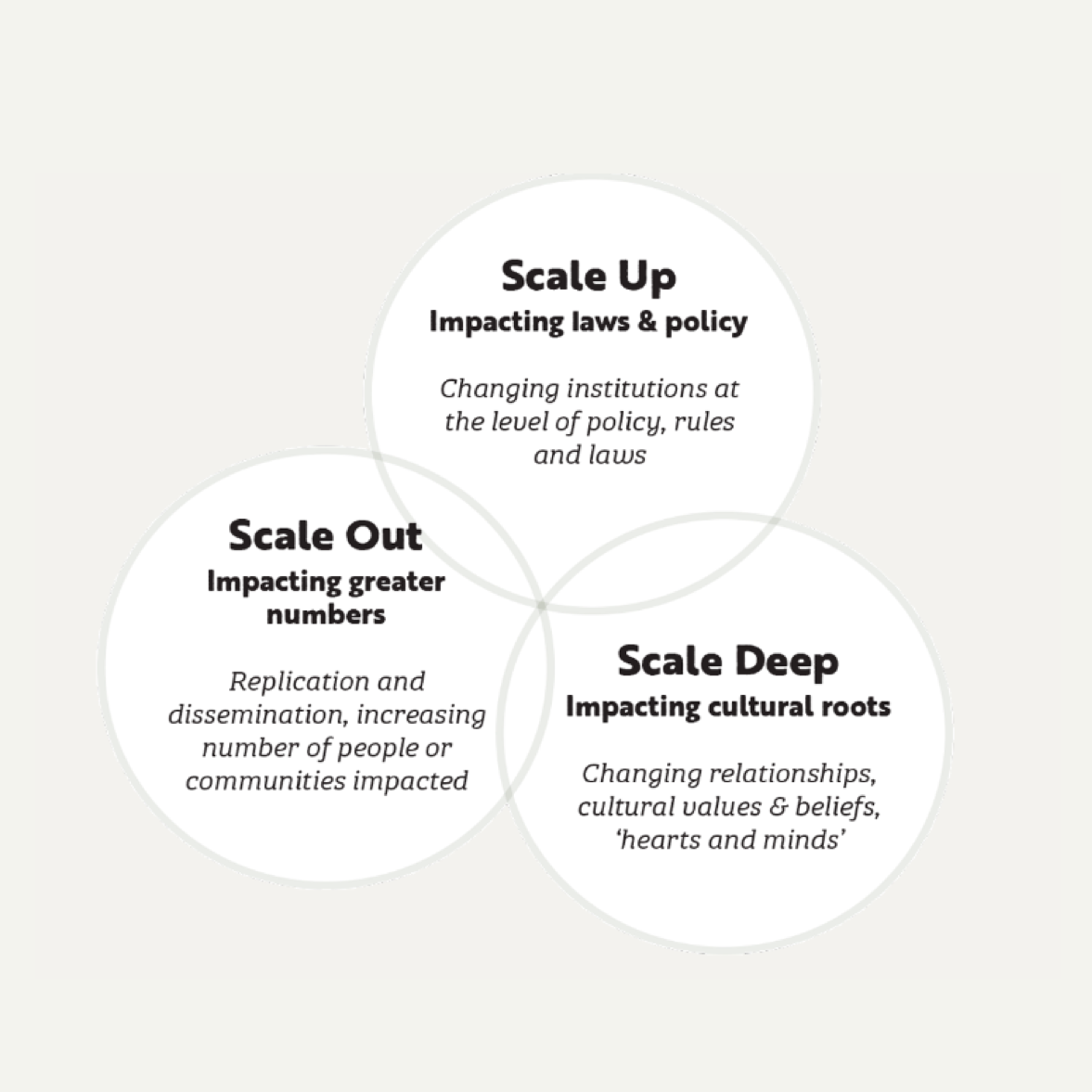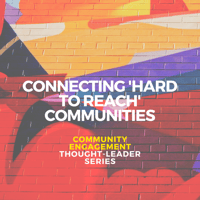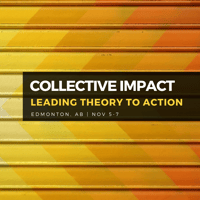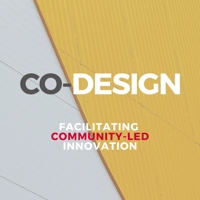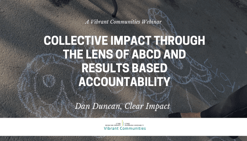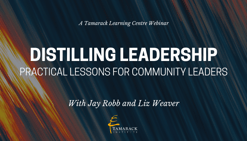Tamarack Institute | October Edition, 2019
From System Formation to Cultural Transformation
By: Dena Kae Beno, Housing and Homeless Coordinator, City of Abbotsford
Ron Van Wyk, Director Programs, Mennonite Central Committee, BC
Keith Jones, Practice Lead, Challenge Dialogue System Network
Bob Yates, Yates, Thorn & Associates
.jpg?width=300&name=Engage%20Abbotsford%20(1).jpg) We are continuing on a remarkable journey of change and transformation in the community of Abbotsford, a municipality of 160,000 people 70 km east of Vancouver, Canada. The community is embracing and deepening its collective opportunity to co-research, co-design and co-implement the Abbotsford Homelessness Prevention and Response System (AHPRS) through a series of Community-Based Action methodologies that include:
We are continuing on a remarkable journey of change and transformation in the community of Abbotsford, a municipality of 160,000 people 70 km east of Vancouver, Canada. The community is embracing and deepening its collective opportunity to co-research, co-design and co-implement the Abbotsford Homelessness Prevention and Response System (AHPRS) through a series of Community-Based Action methodologies that include:
- a visual outcome-based, Collaborative Roadmap that first set in-place a comprehensive and coherent implementation foundation
- several multi-stakeholder research design teams
- City Council appointed Homelessness Action Advisory Committee working groups
- Annual Community Forums to initiative the transformation process and then to provide annual progress reporting and consensus-informed systems work planning
- tangible community infrastructure development
The Collaborative Roadmap (Integral Strategy Roadmap™), which was informed with over 175 key stakeholder perspectives, serves as the AHPRS architecture resulting in:
- a community-owned, invested and mobilized system – the AHPRS
- a Coordinated Intake and Referral subsystem for individuals and families to access housing, health, income assistance and community integration supports
- the Abbotsford Inter-Agency Care Team to provide relationship-based, wrap around care
- the Abbotsford Community Hub Centre, a multi-agency access and care centre
- Many Ways Home Housing Society, serving as Abbotsford Housing Foundation, will aim to provide AHPRS financial sustainability, and the development of a community-owned Affordable Housing Inventory
We recognize that it is one thing to design and build a system, but quite another level to sustain a system. And, the key to sustaining the system is continuing to support and enhance the cultural transformation that is taking place in the community of Abbotsford. This cultural transformation now forms the heart of our “second generation” systems work. Critical to this new effort will be embedding a restorative practice and reconciliation lens. The City and its community leaders look forward to working closely with new and existing groups and interests including:
- Lu’ma Native Housing
- Reconciliation Canada;
- Abbotsford Restorative Justice Advocacy Association
- local Indigenous communities and individuals experiencing homelessness; and
- AHPRS’ research design teams and working groups
Our enhanced program aims to:
- launch a series of community dialogues supported by the Challenge Dialogue System®
- design and deliver a Many Ways Home on-line curriculum incorporating reconciliation and restorative practice modules
- embed restorative practice and Indigenous systems practice
Collectively, this work will help to deepen trusting relationships, strengthen commitments to continue to act together, and sustain change that fosters healthy and vibrant community-level outcomes.
Take Your Learning Further:
- Learn more about the Abbotsford Homelessness Prevention & Response System
- Read From Knee-Jerk Reaction to Transformation Change: addressing the homelessness challenge in Abbotsford (2018) —
- Learn more about how to address complex challenges with diverse group using the Challenge Dialogue
- View The Abbotsford Stories Project (3 short videos) – select the Community Integration tab and scroll-down to item 2
Share this article:
Relearning to Be a Citizen
BY: HEATHER KEAM
 I am taking part in my first book club and we are reading John McKnight and Peter Block’s book, The Abundant Community, Awakening the Power of Families and Neighbourhoods. A few chapters in and I have gone from confusion to amazement in my thinking process.
I am taking part in my first book club and we are reading John McKnight and Peter Block’s book, The Abundant Community, Awakening the Power of Families and Neighbourhoods. A few chapters in and I have gone from confusion to amazement in my thinking process.
When we are born, we start our lives as citizens of our family and community, and slowly become consumers of products, services and systems that leads us to believe we are better off and safer. When we think like a system we tend to identify the problem by labeling a specific target - for example, the ‘youth problem’ - however, John and Peter point out that it is not the youth with the problem but the neighbourhood and community.
As I turn on the news every night, I hear about financial deficit, cut backs to programs and services, and watch people try to figure out what do. I can’t help but think that something is wrong, we can’t keep running our towns and cities as services and systems. We as individuals, living in communities, need to relearn what it is to be a citizen and start helping ourselves and our neighbours with our gifts and assets.
One approach that is gaining momentum in Canada is Asset-Based Community Development (ABCD). ABCD looks for, and starts from, people’s gifts and strengths (assets). These assets equip people to create local opportunities and respond to needs and challenges in their neighbourhoods. ABCD goes beyond any individual’s gifts or particular group’s strengths to consider how these may come together to create broader changes for the common good within a community. This approach helps move groups, organizations and institutions from being the experts, working with the medical model, to be an animator who supports community to think and do “by us for us”.
The ABCD approach is based on these following principles:
- Everyone has Gifts: Each person in a community has something to contribute!
- Relationships Build Community: People must be connected for sustainable development.
- Citizens at the Centre: Citizens must be viewed as actors— not as passive recipients.
- Leaders Involve Others: Strength comes from a broad base of community action.
- People Care: Listening to people’s interests challenges myths of apathy.
- Listen: Decisions should come from conversations where people are truly heard.
- Ask: Generating ideas by asking questions is more sustainable than giving solutions.
Understanding what ABCD is and how it works through principles, practices and values can get confusing and frustrating to put it all together. We have been working with John McKnight, Cormac Russell and the ABCD Community of Practice to put together an ABCD at a glance document that synthesizes what ABCD is, outlines the approach and puts it together in a way that will give you an overview and see if it is the right approach for your work. This document can also help you to build the case with your champions and stakeholders.
I ask you as a person, an association or organization to think about how to change the conversation - How can you support people to be citizens and support citizens to deepen their community?
Learn More:
- Check out ABCD at a Glance
- Learn about Four Essential Elements of ABCD Process
- Access the Basic Guide to ABCD Community Organization
- Visit ABCD Canada website
- Learn more about the ABCD Institute
Share this article:
Where You Live Makes a Difference to Mental Health and Well-Being
BY: CHARITO GAILLING
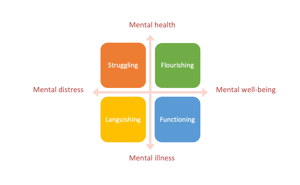 The Mental Health and Well-being: Considerations for the Built Environment report offers evidence-based planning principles for health professionals and local governments and it explains how we can build neighbourhood spaces that promote mental health and well-being while mitigating unintentional negative impacts.
The Mental Health and Well-being: Considerations for the Built Environment report offers evidence-based planning principles for health professionals and local governments and it explains how we can build neighbourhood spaces that promote mental health and well-being while mitigating unintentional negative impacts.
Our built surroundings can shape our daily activities and lifestyle choices in ways that are far more significant than most people would imagine. Our housing, how safe we feel in our neighbourhood, how connected we are to our neighbours, our options for active transportation, and how readily we can access healthy foods, parks and green spaces are all factors that can have a tremendous impact on our health. While physical health impacts associated with neighbourhood design are well established, the influence on mental health and well-being is an emerging research area that is deepening our understanding of what the term “healthy built environment” means and how diverse health outcomes are interconnected.
This report draws on input from content experts and broad literature reviews and the report itself describes how five key features of the built environment can be designed to either positively or negatively impact our health.
- Neighbourhood Design: Community planning goals that prioritize compact and connected design, have considerable health benefits such as increased access to services, active transportation options and opportunities for positive social connections. However mental health and well-being is compromised when development happens rapidly or without adequate consultation and it often results in over-crowding, housing unaffordability, and the alienation of existing residents who may feel pushed out of the community. Research shows that increasing density must be balanced with meaningful public engagement, care for community safety and inclusion, and appropriate land use mix with good quality infrastructure.
- Transportation Networks. Exposure to chronic traffic noise and congestion is associated with negative mental health impacts. Design solutions which minimize noise exposure and congestion, such as increasing options for active and public transportation, improve stress and anxiety.
- Natural Environments: Well-maintained and easily accessible green and blue spaces encourage a myriad of mental health benefits such as positive social involvement, physical activity, stress reduction, appreciation of beauty, and more. The positive mental health impacts of being exposed to natural environments is so strong that they can be found even when people are close to natural spaces but don’t directly interact with them, such as when they are visible through a window.
- Food Systems. This is a new area of research with limited findings, however positive mental health impacts such as social interactions, resilience and stress reduction are associated with community gardens, the availability of healthy food retail options, and access to culturally appropriate foods and Indigenous harvesting strategies.
- There is some evidence that living on the higher floors of high-rise buildings is associated with poorer mental health due to increased noise, crowding, and lack of play and social spaces. These unintended negative impacts can be mitigated by offering good quality housing infrastructure with design factors that promote positive social connections, air quality and thermal comfort, and neighborhood revitalization efforts to improve mental health and well-being.
Potential mental health impacts are important to consider within community planning efforts to build thriving and resilient communities. The Mental Health and Well-being report is intended to offer a practice tool for health professionals who are collaborating with local governments to support health priorities and evidence based decision making. It builds on the conceptual framework offered in the Healthy Built Environment Linkages Toolkit, and supports calls to action by Canada’s Chief Public Health Officer (2017) and other national documents highlighting the role of local planning and design to promote mental wellness.
The Mental Health and Well-being report was developed by BC Children’s Hospital and the BC Centre for Disease Control in consultation with expert advisors. For more information, contact charito.gailling@bccdc.ca.
Learn More:
- Read the report Mental Health and Well-being: Considerations for the Built Environment
- The HBE Linkages Toolkit synthesizes a collection of research findings that link planning goals to population health outcomes. The Toolkit identifies five interrelated features of the built environment: Neighborhood Design, Transportation Networks, Natural Environments, Food Systems, and Housing.
Share this article:
How Much Time Does it Take?
BY: NATASHA PEI
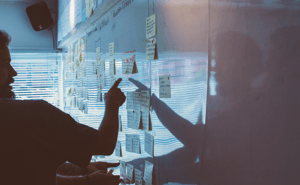
How much time does it take to create a poverty reduction strategy? There is no good answer to this question. However, one of the most common drawbacks we hear from Cities Reducing Poverty members is the unexpected amount of time it takes to create and launch a strategy.
We spoke with five communities who had recently gone through the process of developing a community-wide poverty reduction strategy. We compiled and compared their work plans against the actual time it took – from the moment they agreed to undertake a strategy using a community-wide approach to its public launch – and reflected together on why it was important for them to make the extra time where they did.
Here are a few of the commonly recurring surprise time-takers:
- Establishing a shared vision – Getting the Roundtable and/or Leadership Team on the same page with the overall goal and approach.
- Momentum – The unexpected level of excitement in the community and snowballing engagements.
- Targeted community engagement – Particularly engaging people with lived/living experience and marginalized communities.
- Common Language – Use of language internally as well as publicly (ex. working definitions, strategy drafts, invitation letters).
- Compiling, writing and editing the strategy report – Styling, formatting, gaining validation from partners and incorporating revisions.
Some accelerators of time were also noted:
- Already having the right people at the table;
- Previously completed research; and
- Federal/provincial initiatives (especially the opportunity to contribute to poverty reduction strategy consultations).
The new tool, Poverty Reduction Strategy Timelines, is a compilation of timelines providing a point-of-reference for multi-sectoral poverty reduction initiatives who are planning to develop their own strategies, sharing commonly reported un- or under-anticipated pockets of extra time.
While each community is different with a different journey and will encounter its own unexpected twists and turns, the goal is to provide organizers with insights and examples from across Canada to assist in setting plans and expectations.
Once you have explored the planned and actual timeframes as well as the areas of unexpected time, reflect on how you can use these lessons when creating your own team’s work plan. Where can you build in extra time or anticipate needing to be flexible with dates?
Are there sections of work that you could use extra resources or advice from Tamarack or Cities Reducing Poverty members help you advance through the trickier areas of the work?
Learn More:
- Download: TOOL | Poverty Reduction Strategy Timelines
- Go further by exploring the contributing poverty reduction collaboratives and their strategies:
Share this article:
CATALYZING COMMUNITY INNOVATION
By: Galen MacLusky
Read the Paper
A FEMINIST APPROACH TO SYSTEMS CHANGE
By: Tatiana Fraser
Watch the Webinar
A GOOD PLACE IS BETTER THAN NO PLACE
By: Jonathan Massimi
Read the Post
REWEAVING OUR RELATIONAL FABRIC
By: Milton Friesen
Watch the Webinar
YES WE CAN! REDUCE POVERTY
By: Vibrant Communities
Read the Case Study
LATEST TRENDS IN COMMUNITY CHANGE
By: Paul Born & Liz Weaver
Watch the Recording
Connecting 'Hard to Reach' Communities: A Community Engagement Thought Leader Series - Last Chance to Register!
October 7 - Edmonton, AB
October 10 - Toronto, ON
David Hanna, National Coordinator, Inspiring Communities, New Zealand and Director, Wesley Community Action will share his experience working with and engaging diverse communities across New Zealand. In this engaging and interactive workshop, learn the principles of community-led development that are central to the Inspiring Communities approach and support engaging all members of communities.
Learn More About Connecting 'Hard to Reach' Communities
Turf, Trust, and Collaboration: Practical Tools for Building Trust
October 17 | Waterloo, ON
December 6 | Hamilton, ON
Increasingly, communities are using collaboration to tackle some of their most complex issues. How can we do this effectively when we don’t build practices which engage others and build trust?
This interactive workshop focuses on the core leadership competency of trust building. Learners will walk away with ideas, tools and approaches to effectively engage diverse community partners and intentionally build trusting relationships and collaborative impact. Come prepared to share your experiences and insights in how to build trust.
Learn More About Building Trust
Collective Impact: Leading Theory to Action
November 5-7 | Edmonton, AB
Participants of this workshop will walk away with a solid foundation of Collective Impact and a CI Facilitation Toolkit to share back to their leadership tables and volunteer base to help take their Collective Impact initiative to the next level.
Build Your Collective Impact CapacityCo-Design: Facilitating Community-Led Innovation
November 13-14 | Toronto, ON
How can you bring diverse members of your community together to develop creative new ideas, innovative approaches to persistent problems, and build alignment and momentum for action?
Join us for a hands-on facilitation workshop on different approaches to engage the community to innovate together, how to understand what makes these kinds of gatherings distinct, and tools that you can use to host them.
Learn More About Co-Design: Facilitating Community-Led Innovation
Collective Impact through the Lens of ABCD and Results-Based Accountability
Speaker: Dan Duncan
Date: October 10, 2019
Distilling Leadership: Practical Lessons for Community Leaders
Speaker: Jay Robb
Date: October 15, 2019
Reckoning, Repair, and Change: Authentically Advancing Racial Equity
Speakers: Veronica Borgonovi, Hayling Price, and Liz Weaver
Date: October 22, 2019

